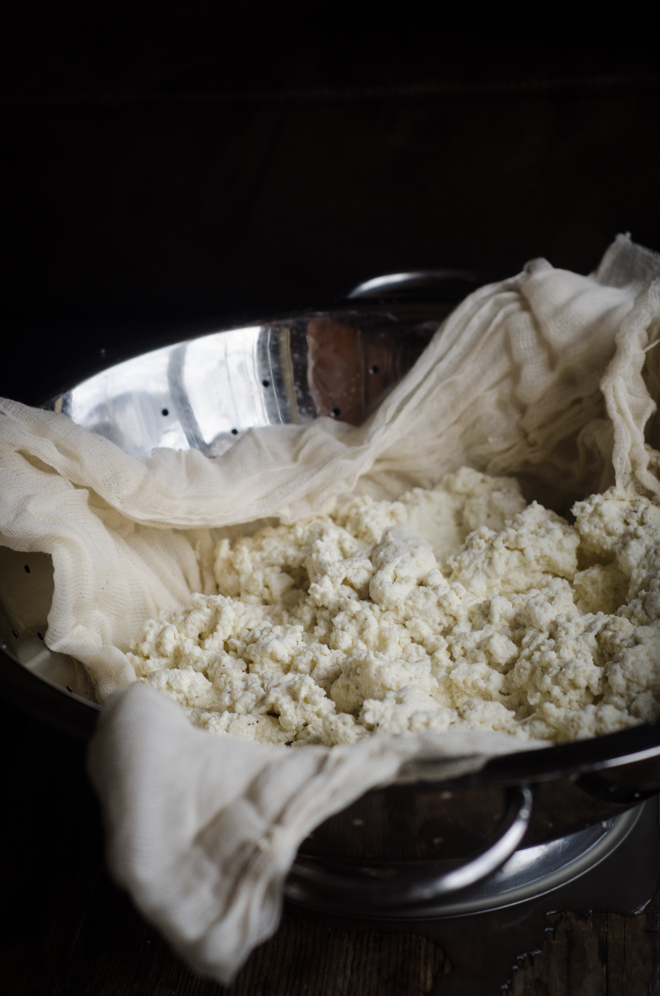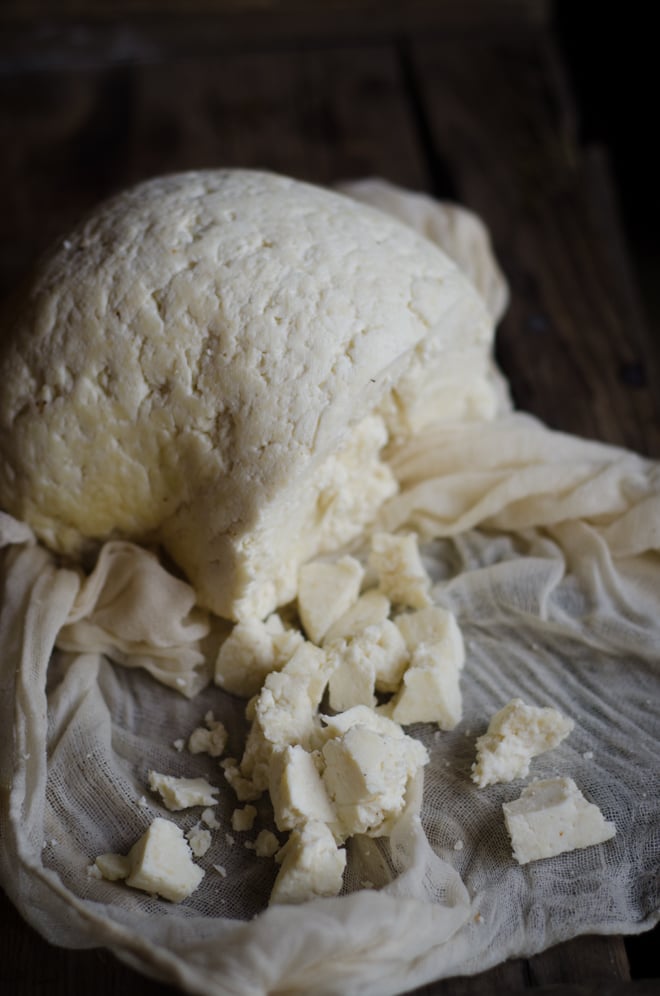What to Add to Milk to Make Cheese
Each week, from April through November, we pick up 4 gallons of fresh, raw milk from our local dairy. We like to visit the farm that houses our milk cows - all doe-eyed guernseys and jerseys with their pale tan-colored coats and their soft muzzles. Like many traditional foods enthusiasts, my family belongs to a herd share; that is, we collectively own an interest in a small herd of grass-fed cows, and as the owners of the cows, we're entitled to their milk.
It started slow - a small share that provided about a half gallon a week, then progressed to 1 gallon, then to 2 and now to 4. Dutifully, each week, I skim the cream off of two gallons of milk, leaving the other two whole. I use the cream for desserts and to serve with fruit, while using the skimmed milk for homemade raw milk yogurt or for simple homemade farm cheese - sometimes seasoning it with fresh herbs, and sometimes leaving it plain as I do below.

Making Cheese at Home
While making cheese often involves purchasing both starter culture and rennet, you can also make cheese very simply with only heat and something acidic like lemon juice or vinegar, the combination of which will cause the cheese curds to separate from the whey. The resulting cheese doesn't offer up the complexity of an aged cheese, but, rather, tastes milky, sweet and mild. Its simplicity makes this farm cheese my go-to recipe when I have too much milk on my hands; however, for more complex cheeses, I tend to rely on Artisan Cheesemaking at Home - a book that guides novice cheesemakers (and I am most assuredly a novice) through very simple cheese, to more complex cheeses with simple, step-by-step instructions.
This cheese, a simple and easy farm-style cheese, comes together quickly and is an excellent way of using up excess milk. We always seem to have more milk than we need now that we buy extra to provide for our cream and butter needs. Paneer, a classic Indian cheese, is made the same way - though often substituting lemon juice in place of vinegar. You can use this cheese for snacks, in place of mozzarella, or in casseroles. Children, who can often find aged and complex cheeses too overwhelming for their tastebuds, typically like this simple, homemade farm cheese.

Simple Farm Cheese
This simple farm cheese can come together quickly. It tastes mild and sweet, and doesn't require rennet, making an excellent cheese for beginners.
Cook Time 1 hr 20 mins
Total Time 2 hrs 20 mins
Print Save Recipe Saved!
- 1 gallon whole milk not ultrapasteurized
- ½ cup white vinegar
- 2 teaspoons finely ground real salt
-
Line a colander with a double layer of cheesecloth or a single layer of butter muslin (find it here).
-
Pour the milk into a large, heavy-bottomed kettle, and bring it to a boil over medium heat. Stir it frequently to keep the milk from scorching. When it comes to a boil, immediately reduce the heat to low, and stir in the vinegar. The milk should immediately separate into curds and whey. If it does not separate, add a bit more vinegar one tablespoon at a time until you see the milk solids coagulate into curds swimming within the thin greenish blue whey.
-
Pour the curds and whey into the lined colander. Rinse them gently with cool water, and sprinkle the curds with salt. Tie up the cheesecloth, and press it a bit with your hands to remove excess whey. Let the cheesecloth hang for 1 to 2 hours, then open it up and chop it coarsely. Store in the fridge for up to a week.
You may set the lined colander over a bucket or crock to catch they whey rather than discarding it; however, keep in mind that it is not a cultured food, and if you are accustomed to using whey as a starter culture for fermented vegetables, it will not work as it doesn't contain live active bacteria. It can, however, be reserved for feeding pigs and chickens, or for soaking grains and flour.
What to Add to Milk to Make Cheese
Source: https://nourishedkitchen.com/farm-cheese-recipe/